Wild chervil identification and control
Information about the noxious weed wild chervil. Wild chervil is also known by its scientific name, Anthriscus sylvestris.
About this weed
Wild chervil is a regulated Class B noxious weed. This means control is required in King County under the state noxious weed law with selective regulation in King County.
Wild chervil is also on the Washington quarantine list and it is illegal to buy, sell, or offer it for sale in the state.
Wild chervil is known as Anthriscus sylvestris and it is in the carrot/parsley family, Apiaceae. Another common name for wild chervil is cow-parsley.
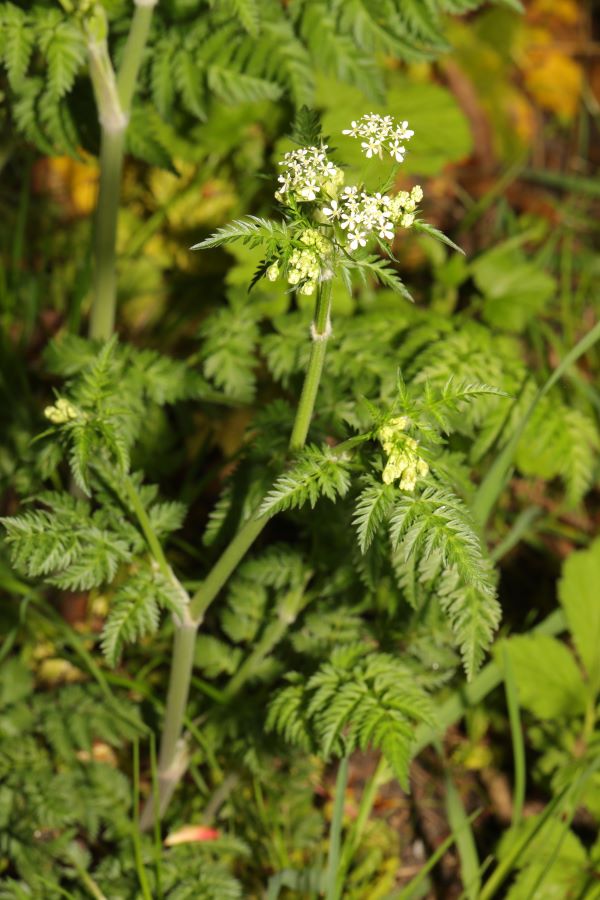
Why it’s a noxious weed
- Wild chervil can grow in almost any type of soil and creates dense patches which are difficult to control.
- It produces poor quality forage or hay for animals.
- Wild chervil outcompetes native and desired vegetation.
- It grows fine in shaded areas which can impact otherwise healthy or healing forest understories.
- Wild chervil can host a virus that attacks cultivated carrots, parsnips, and celery.
Plant description
Wild chervil is a biennial (two-year life cycle) or short-lived perennial (plants that have a 2+ year life cycle).
It can grow up to 3-5 feet tall. It can be found in degraded fields, open woodlands, and roadsides. It tolerates part-shade conditions and forest edges.
The stems are all green, hollow, ribbed, and grow hairy fringes at the nodes (junctions where leaves/stems grow from). The leaves are dark green, ferny, and sharply pointed. They are pinnately compound, meaning divided into leaflets arranged along a central stem in a feather-like form.
Wild chervil has small, white flowers clustered in an umbrella shape, with multiple smaller clusters within each larger one. Seeds are in pairs with small antennae-like points at the top. They only remain viable in the soil for 1-2 years.
The roots are thick and tuberous and can produce buds that detach and grow a clone of the parent plant after it dies.
Wild chervil is native to Eurasia and was likely transported to North America in seed mixes.
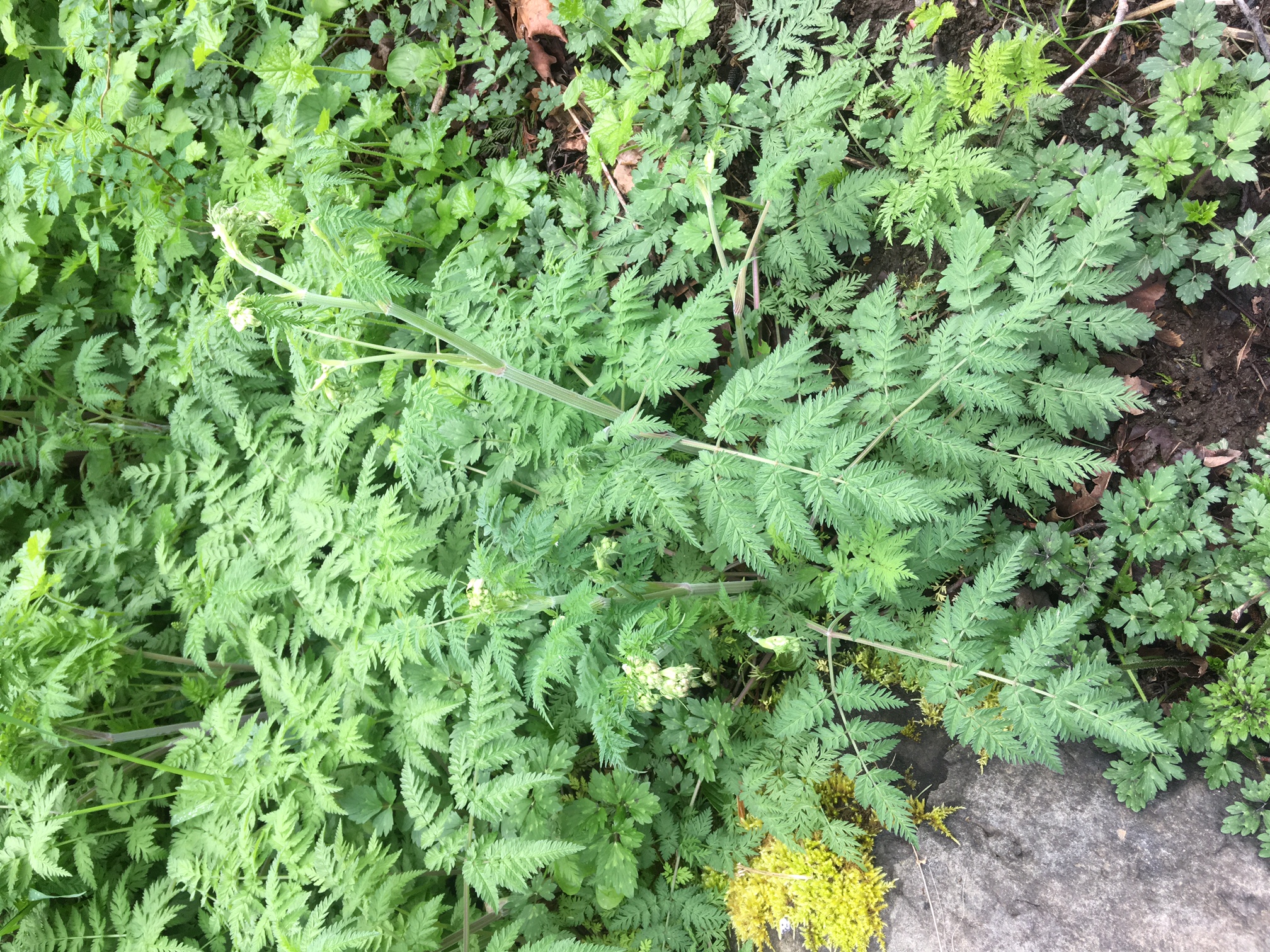
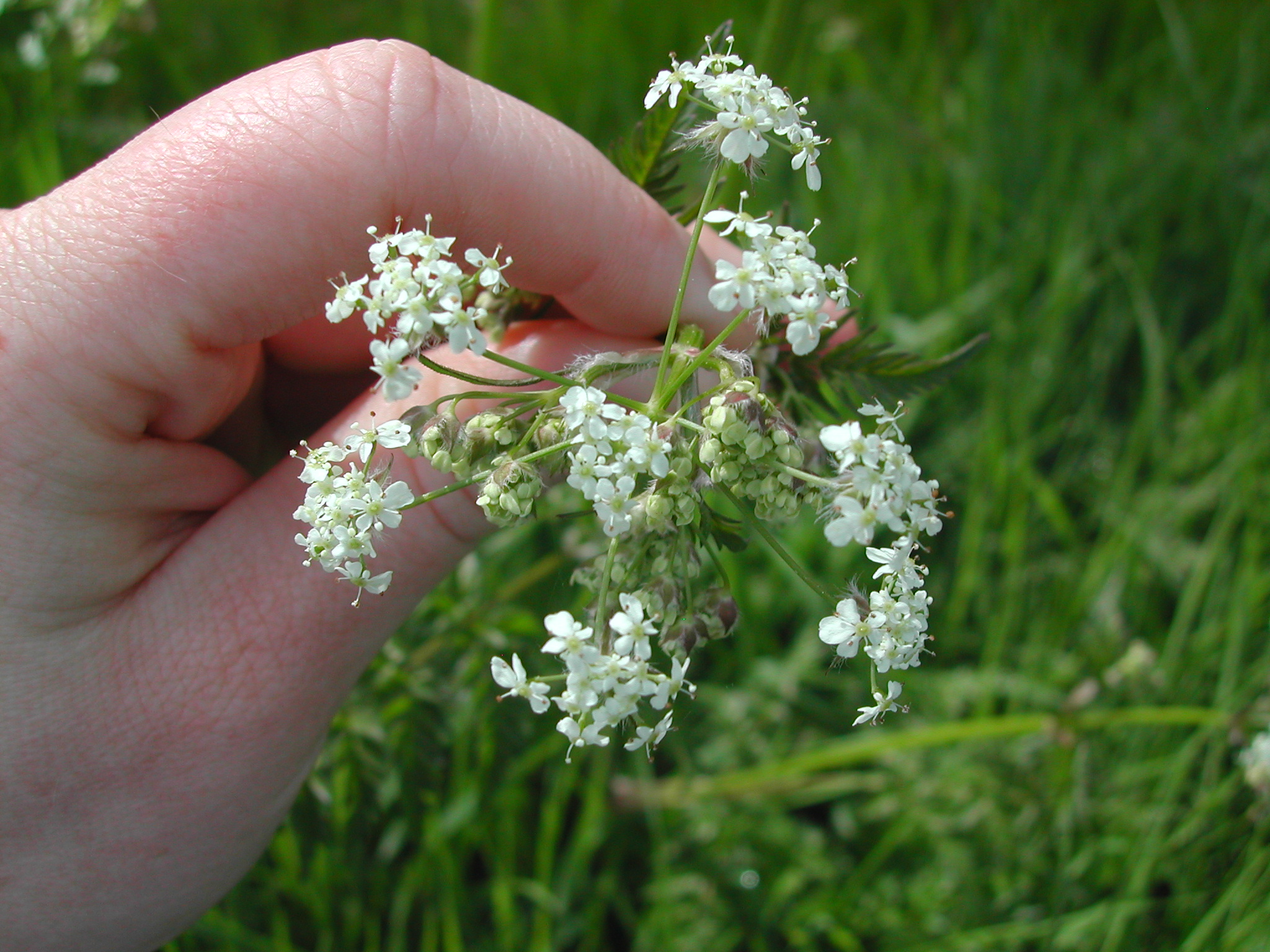
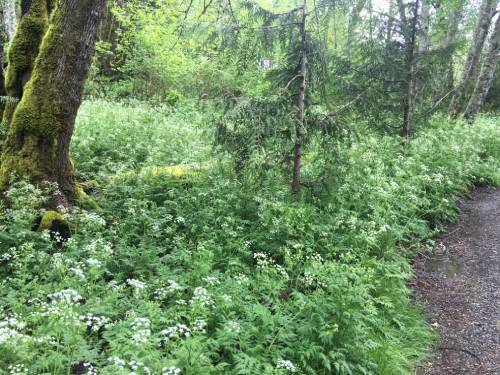
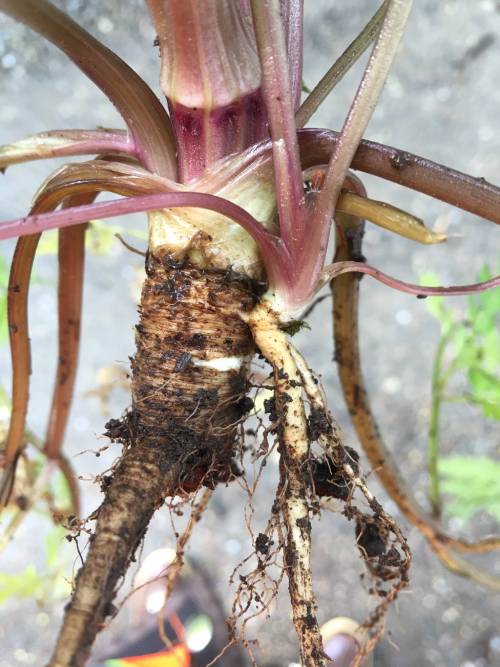

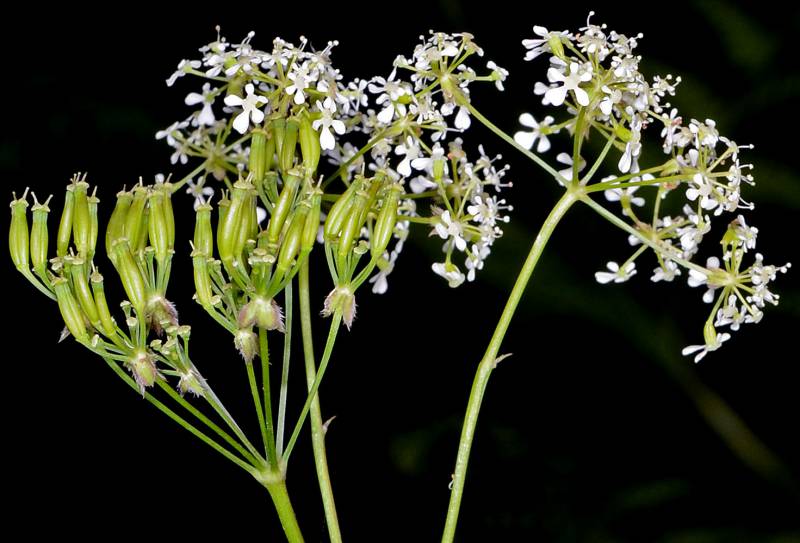
Be aware of look-alike plants
Many plants look similar to Wild chervil, including:
- Poison hemlock (Conium maculatum)
- Wild carrot/Queen Anne's Lace (Daucus carota)
- Rough chervil (Chaerophyllum temulum)
- Bur chervil (Anthriscus caucalis)
Other similar looking plants are members of the parsley/carrot family such as fennel, chervil, and anise.
When in doubt, take photos and share them with us or report them on iNaturalist.
What to do if you find it
Property owners are required to control wild chervil on lands that they manage. Please notify us if you see wild chervil growing in King County. Our program staff can provide the property owner or appropriate public agency with site-specific advice on how best to remove it. We map all known locations of regulated noxious weeds such as wild chervil in order to help us and others locate new infestations in time to control them.
Control methods
We recommend using a combination of methods to control noxious weeds. In areas with few weeds, it is important to act quickly before they become harder to control. Make a long-term plan as it often takes several years to get rid of most weeds. Start in the least infested areas first and then move into more heavily infested areas.
Prevention
These plants flower and set seed beginning in early May. Save time and resources by intentionally managing wild chervil before it has the chance to make and spread seeds.
Cultural control
Maintaining healthy soils and competitive grasses are important for sustained weed management in pastures.
Manual control
For individual plants or small patches, hand pull or dig up the roots when the soil is moist. Take care to remove all roots, as plants can regrow from the root crown. If flowering, you can cut and bag flower heads before digging out the roots. Wear gloves and long sleeves to avoid skin contact as the sap can be an irritant to some.
Mechanical control
Research has shown tilling to be the most effective method. Target plants when they are stressed after treatment or in late summer. Be sure to restore competitive vegetation to disturbed areas.
Chemical control
Stay safe when using herbicide:
- Always read the label before use.
- Wear a long-sleeved shirt, long pants, shoes, and eye protection.
- Follow state and local regulations.
Foliar spray wild chervil in bud/early flower stage in late April to mid-May, depending on conditions. Glyphosate or imazapyr have proven to be the most effective for controlling wild chervil. This is most successful when repeated for several years and combined with a replanting plan.
See the PNW Pest Management Handbook for the most up to date and specific method for chemical control of wild chervil.
Disposal instructions
Pulled plants can be left onsite to decompose, except for flower and seed heads. Always remove flower and seed heads if present and put them in the garbage, NOT compost (does not get hot enough to kill all the seeds). Never dump plant material in parks or natural areas because weeds can spread from yard waste piles.
Noxious Weed Disposal - Washington State Noxious Weed Control Board

 Translate
Translate